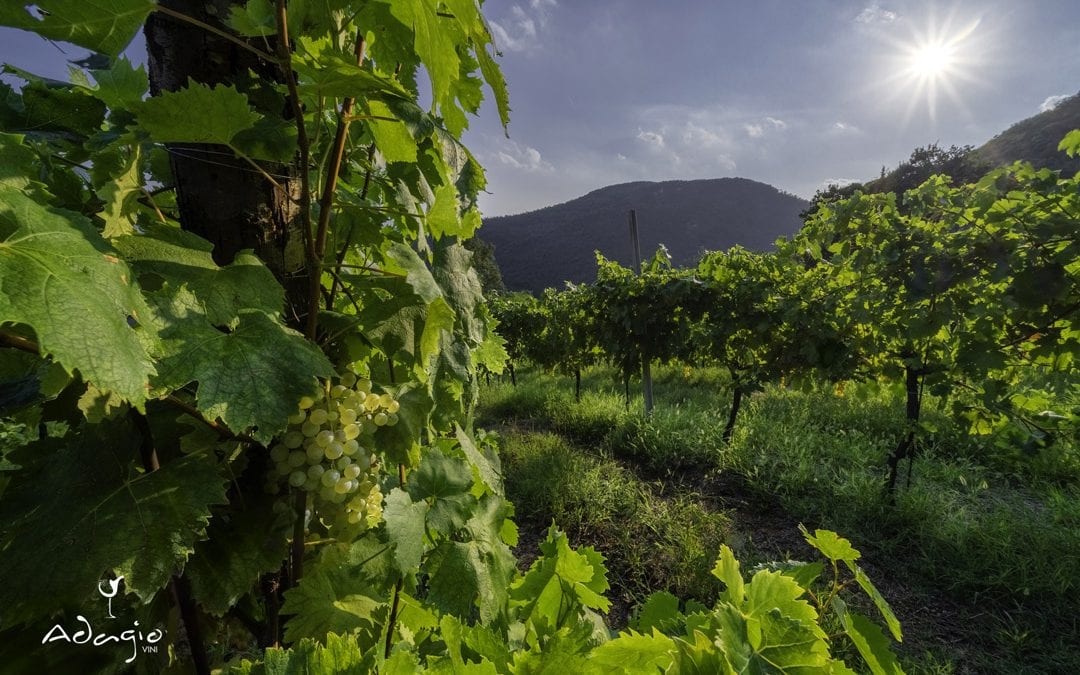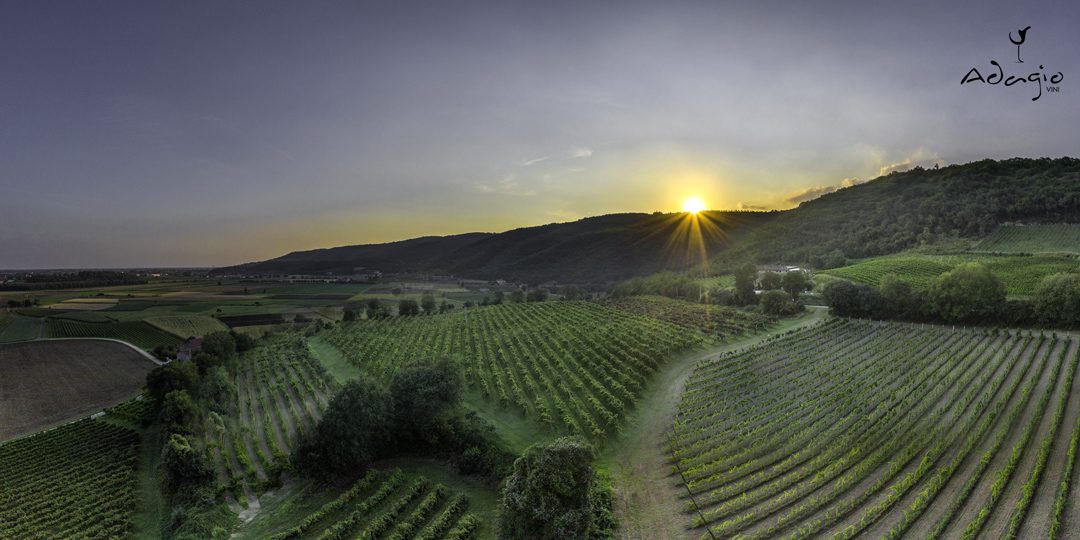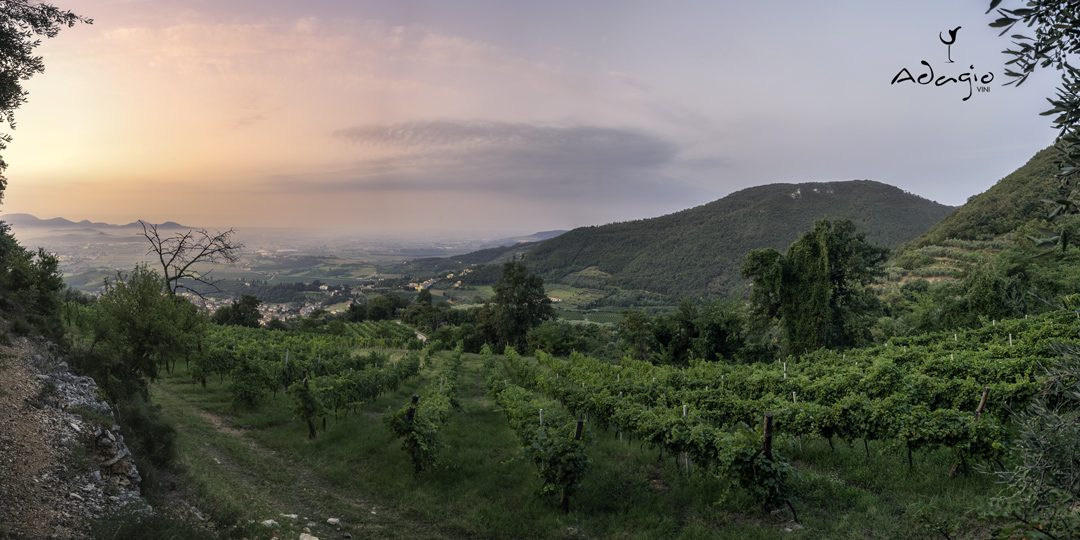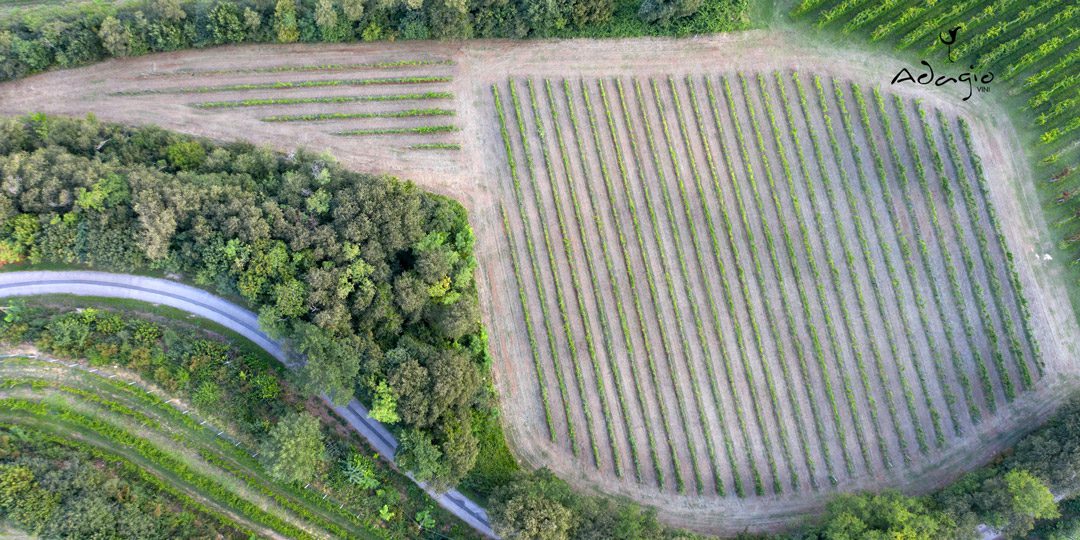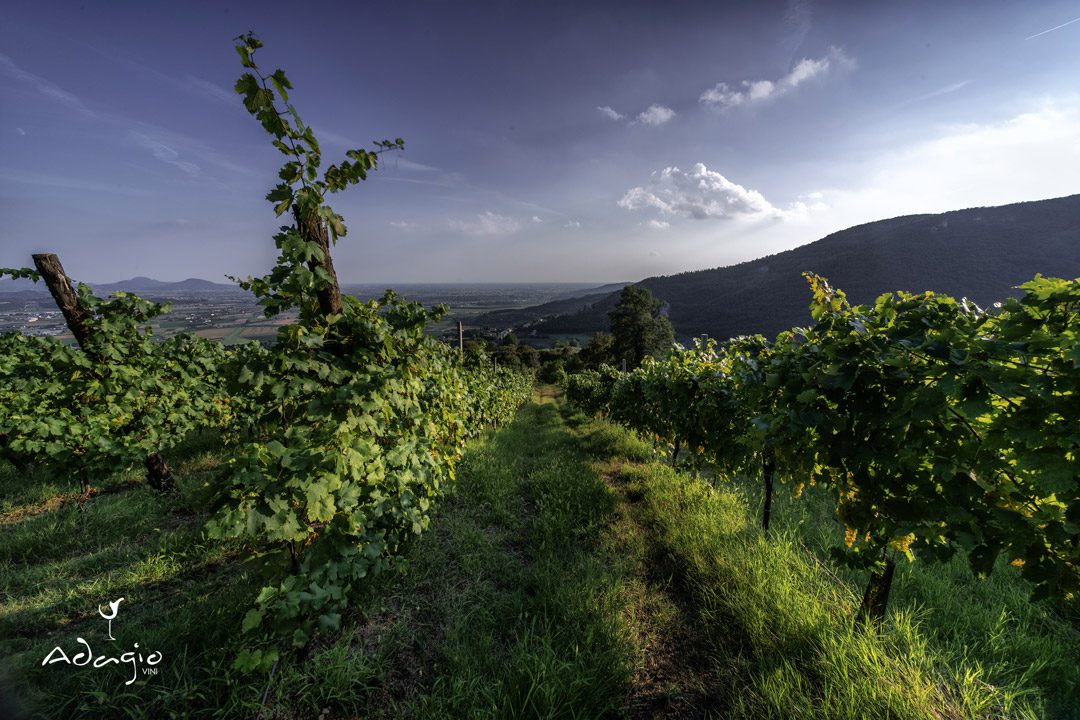There is a phrase, now overused, that I hear repeated every time I set foot in a cellar: "wine is made in the vineyard". In my opinion, this is a bit of an exaggerated concept since no wine is born and grows in the vineyard... rather, it is formed the raw material from which to elaborate this product of first transformation: wine! So we agree that the higher the quality of the raw material, the easier it will be to process and the fewer additives and cellar practices will be necessary to obtain a 'proper' product. However, the fact that they are 'less necessary' does not mean that they will also be 'less present': the wine is the mirror of the company's philosophy! Take a look at Champagne for example: regardless of whether healthy grapes are processed, you will never hear a chef de cave tell you that good wine is made in the vineyard... but these glasses! 😆 He makes the good wine with his very secret recipes...
This sentence, however, inspired me to write this educational article on the vineyard, which I hope will be useful for you to brush up on or look into the wonderful world of wine! For the photos I thank the winery Adagio Wines: their vineyards in the Berici Hills are enchanting and photographer Leonardo Maria Scordo was also diVino!
Vineyard quality
The quality of the vineyard depends on a number of internal and external factors and therefore the choices made when deciding to plant a new vineyard are crucial. A vineyard is a small ecosystem in which a series of forces interact that determine the final result. In order to have bunches of grapes that are just the right colour, rich in sugars, extractives and aromas, one must choose the right grape variety according to the type of soil and then adopt the most suitable cultivation techniques.
In this article I talk about:
Internal factors
1. Vine genetics
Not all grape varieties show the same adaptability to different climatic and geophysical conditions. After a short period of acclimatisation, some adapt perfectly (chardonnay, merlot, cabernet sauvignon...) in almost all areas, others are much more demanding (nebbiolo...) and only express themselves in certain areas. The grape varieties can be:
- INDIGENOUS GRAPE VARIETIES = They were born in a certain area and continue to be cultivated there to get the best result (e.g. albana in Romagna);
- ALLOCHTHONOUS/INTERNATIONAL VARIETIES = They are widespread on every continent where vines grow with excellent results (chardonnay, merlot, cabernet, riesling...).
2. Rootstock
The vine plant consists of the vine variety/cultivar and the rootstock/ rootstock. To avoid the destructive action of phylloxera, the foot is almost always of American origin. In some areas, it is still possible to find free-standing vines (with their own foot, not grafted onto American feet):
- Case A: vines grown in sandy soils that prevented phylloxera from spreading;
- case B: vines grown in soils with particular fertility and soil moisture conditions that made them more resistant.
Within each variety there are several clones (= genetically identical individuals, with specific characteristics relating to fertility, bunch shape, berry, sugar and colour and odour accumulation capacity) created to improve the vine's resistance to disease and increase its quality and productivity, which are more or less adapted to different soil and climate environments.
External factors
3. Pedoclimatic environment
The greatest weight in the assessment of vineyard quality is certainly that of the soil and climate environment. As they say, you can't squeeze blood from a turnip: if the area, climate and soil are wrong, there are no cultivation techniques that can hold! 😉
Vineyard quality: Zone
Latitude
Vines fear both cold and excessive heat in equal measure. In the northern hemisphere, the area where vines grow best is between the 40th and 50th parallels. However, in some more northern areas, beyond the 50th parallel precisely, there are extraordinary vineyards. Just think of the Mosel Rieslings in Germany! In the southern hemisphere, the area where vines grow best is between the 30th and 40th parallels.
Altitude
The cultivation of grapes for the production of PDO wines is mainly done in the hills and mountains. There are, however, exceptions permitted by a large daily temperature range especially during the ripening phase of the grapes, such as the Napa Valley in California or the Graves in the Bordeaux region. Gentle hillsides are best in terms of temperature, sunshine and brightness. This favours the chlorophyll photosynthesis of the leaves and allows sugars to form. The vine needs light (~ 20,000 lux) and heat (temperatures between 25°C and 28°C). This does not mean that it cannot also give extraordinary results under different conditions: as we are analysing the factors influencing the quality of the vineyard are many. Altitude, however, influences temperature, although this is still conditioned by geographical location (north, south...).
Giacitura
The location of a vineyard is defined as the inclination of a vineyard in relation to the horizontal plane and can be flat, hilly or mountainous. Its effects are not to be confused with altitude, which analyses temperature and insolation as a function of height. The lie indicates the inclination and thus the angle at which the sun's rays penetrate the vineyard in relation to the perpendicular. It is analysed in correlation with exposure to determine whether a piece of land is suitable for vine cultivation despite its altitude.
Exposure
The exposure of a vineyard is defined as its orientation with respect to the cardinal points. Exposure can therefore be Levant (East), Mezzogiorno (South), Ponente (West), Tramontana (North). The hottest exposure in descending order is: S, SO, SE, O, E, NO, NE, N. East-facing soils are cooler than west-facing ones because they get the morning sun and because the sun moves quickly. The sun's morning rays are more slanted and weaker than those of the afternoon. Moreover, even if the sun arrives later, the heat remains for a long time, even after sunset. On north-facing land, the sun never beats directly so they are always cooler.
Vineyard quality: climate
Temperature
As I already mentioned when talking about altitude, the vineyard needs a temperature between 25°C and 28°C to develop at its best. More generally temperatures must be temperate. Late frosts, those that sometimes occur especially in the lowlands in spring, are very dangerous for the development of the buds, sometimes for the life of the plant itself. Due to climate change, viticulture has also moved to cooler areas, such as in Argentina, England, Chile and South Africa. The most important thing, however, remains thedaily temperature range why allows the concentration of aromatic substances in the grape skins (wines with a more complex and elegant bouquet), and fixed acids in the pulp.
Lighting
In general, the vineyard needs a lot of light, as I have already mentioned ~20,000 lux, for better photosynthesis of chlorophyll and thus a better concentration of sugars. The light catalyses a series of enzymatic reactions within the leaves that allow the transformation of water and carbon dioxide into oxygen, sugars and organic substances that will move into the berries during ripening, making them very sweet.
Ventilation
Wind - especially a cool breeze - is not only good but necessary: serves to create an unfavourable habitat for mould developmentthanks to air recirculation.
Humidity
Moisture should be neither too much nor too little. If there is too much moisture, there is a high risk of mould developing that can damage the grapes. If the humidity is low, the leaves close their stomata (surface pores), retain water and block sugar production. This is why vineyards are often located near water sources (sea, lakes, rivers...).
Precipitation
Rainfall is good in spring and summer, when it is very hot. In autumn, as the harvest approaches, rainfall may cause the grape skins to wash away, resulting in faded colours and less intense aromas. The discourse is broader: a slight water deficit is positive in order for the vineyard to absorb nutrients from the soil. Too much drought is bad because irrigation is necessary to keep the vineyard from suffering. In Italy, many production regulations avoid artificial irrigation. In the hills and mountains during grape ripening there is a drier water regime that leads to the reduction or cancellation of vegetative activity in favour of the accumulation of sugars, aromas and noble polyphenols inside the berries. Hail is very dangerous and to limit damage, nets can be placed to protect the rows.
Microclimate
If vineyards are located near water sources, they have two very important advantages. The first is that water reflects light and thus increases the brightness perceived by the leaves. The second is that the water during the day stores heat in order to release it slowly during the nightmitigating the low temperatures. This is an advantage especially in the northernmost latitudes where too great a temperature change would immediately damage the grapes.
Quality of the vineyard: soil
Composition
The vine expresses itself best in poor soils. Fertile soils (clayey, loamy, sandy) are poorly suited to producing quality wines as the vine needs a little tightening to give its best.
- ACID SOIL = Suitable for making wines with little colour but lively, discrete aromas, good freshness, but with little ethyl alcohol and light body;
- CLAY SOIL = Suitable for elaborating red wines with very intense colour, complex bouquet, richness of ethyl alcohol, smoothness and longevity (Valpolicella, Chianti...);
- CALCAREOUS-CLAYEY SOIL = Suitable for processing very high quality wines (Champagne);
- LIMESTONE-ARENACEOUS SOIL = Suitable for making wines balanced in their alcoholic and phenolic components, with fine aromas and not very long-lived;
- CALCAREOUS-MARLY SOIL = Suitable for producing wines with a compact and deep colour, an intense and varied bouquet, rich in mineral notes, structure and ethyl alcohol, with low acidity, finesse and longevity;
- STONY GROUND = Suitable for producing high quality wines (Medoc). Permeable, they are able to retain the sun's heat during the day and release it to the grapes during the night, which makes them particularly profitable in the more northerly areas;
- LIME GROUND = Suitable for processing round wines with low acidity;
- MARLY-FERRUGINOUS AND RED SOIL = Suitable for producing wines of excellent quality. In particular the red soils give characteristic mentholated aromas;
- SANDY SOIL = Suitable for making wines that are light/clear and transparent in colour, very fragrant (fresh and fragrant) and with smooth tannins, making them perfect for drinking young;
- SCHISTOSE/GNEISS SOIL = Suitable for processing white wines rich in mineral aromas (Moselle).
Chemical-physical-microbiological structure
The texture of the soil is just as fundamental as its composition. Grain size consists of the % of clay, silt and sand that are bound to particles of different diameters (skeleton). The best soils have varying % of the different components, e.g. a 20-40% of clay, a 20-40% of silt and a 30-50% of sand.
- CLAY = Particle diameter 0.0002 mm < clay < 0.002 mm. It has the ability to absorb water and gradually release it to the plant roots. It allows good water run-off and retains fertilising elements by preserving them from leaching, nourishing the vines.
- LIMO = Particle diameter 0.002 mm < silt < 0.02 mm. It has characteristics intermediate between clay and sand.
- SAND = particle diameter 0.02 mm < sand < 2 mm. It has the ability to perform a mechanical action because smaller particles are arranged around its particles, making the soil more porous.
- SCHELTER = Particle diameter > 2 mm. These are the coarsest particles and have no particular function. They can be an obstacle for the use of mechanical means.
4. Vineyard quality: cultivation techniques
Choice of grape variety and rootstock
The grape variety must be chosen according to the area because only the perfect integration of grape variety and territory guarantees the best possible quality.
Planting density
High-density plantings, with between 6,500 and 9,000 vines per hectare, make it possible to have plants that are less exploited and therefore develop fewer bunches, but of better quality. The grapes obtained from these plants have more extracts, more sugar and more elegant aromas. The classic planting density is 2,500-3,500 vines per hectare while the average density is 4,500-5,500 vines per hectare.
With the same training system, a higher planting density results in better quality grapes precisely because the skin-to-pulp ratio is higher.
Row orientation
This factor is very important although in Italy it is often constrained by steep terrain on hillsides and mountains within small plots. In northern areas, southern and northern exposures are better because they allow better sunshine in summer and a lower risk of late frost in spring. In southern areas, eastern and western exposures are better because they avoid direct sunlight during the hours when it is the hottest. Maximum leaf exposure to sunlight is achieved with upright or inclined systems such as espalier systems, taking care to maintain a greater ratio of active leaf area to bunch weight.
In the countries of the 'new wine world', having large, mostly flat plots of land, one can choose the best row orientations in order to get the right daily light intake. To do this, galvanised poles must be correctly arranged within the vineyard.
Breeding system
The choice of the training system is fundamental because with the same planting density, there are different results. In colder climates, lower forms of cultivation favour the ripening of the grapes, while in warmer climates there is no such need. More expansive training systems, which are far from the ground and have long vines, give a very abundant production even with a high planting density. This is why when analysing planting density one must always relate it to the training system adopted.
Production and green pruning
It is used to direct production in a quantitative or qualitative sense and to shape the plant and maintain it over time.
- Dry pruning = This is carried out in winter, just once. At this stage it is decided how many buds will give rise to the bunches (7/10 buds to make quality, 15/25 buds to make quantity).
- Green pruning = This is carried out in summer, twice. In this phase, the plant is shaped and cleaned of shoots that have sprouted from the trunk and leaves that prevent good aeration of the clusters are removed, allowing orderly vertical development).
- Cimatura = Used to shorten shoots while maintaining a minimum length of 1 cm.
- Cluster thinning = This is carried out at different times of the year depending on the area, but generally during the second half of July. In this phase, the bunches are cut to the ground when they are formed in order to obtain an optimal ratio between the leaf surface and the fruit. The result is a greater concentration of the extractive substances and thus of the density of the must, which elevates the quality of the final product.
The high density must be combined with the reduction of buds per vine (dry pruning), which will reduce the number of bunches. This 'drastic' pruning results in smaller berries in which the ratio between the surface area of the skin and the volume of the berry increases, resulting in a richer polyphenol and aromatic substances from which more colourful and fragrant wines are made.
Mineral and water nutrition and fertilisation
If the climate is very dry, even arid as in some areas of Spain, Australia, Argentina and Chile, artificial irrigation must be used. In Italy, artificial irrigation is forbidden by many production regulations.
- DRIP IRRIGATION = This is done with plastic tubes placed between the rows, which distribute little water through small holes and ensure good humidity without risking rot.
- FLOOD IRRIGATION IN DITCHES = This is done by gravity by pouring water onto the field via a horizontal ditch located upstream of the field. The water flows over the ground as a thin, uniform film until it reaches the desired saturation level. As it is very economical, it is used in particularly extensive soils. It is not suitable for clay soils due to their permeability. A disadvantage is caused by moving water that can cause erosion and runoff problems.
Herbicide and pesticide treatments
This topic is so broad and intimately linked to vineyard management (organic, biodynamic, conventional, integrated pest management) that it deserves a dedicated article.
Degree of technological, phenolic and aromatic maturity
Ripening is influenced by many factors, including the leaf surface exposed to the sun, the density and number of berries in the bunch, the availability of water in the soil... The optimum is when technological maturity and phenolic maturity coincide.
- TECHNOLOGICAL MATURATION = Concerns the ratio of sugars to acids. In hot areas, in order to have a must richer in fixed acids, the harvest should be brought forward slightly.
- PHENOLIC RIPENING = It concerns the phenolic component of the grape, which is most concentrated in the skins and seeds. When the grapes reach phenolic maturity, the membrane of the skin cells is in the optimal situation for maximum dissolution of the phenolic components in the must (especially anthocyanins). As the grapes over-ripen, there is an increase in the phenolic component and a more structured and tannin-rich wine is obtained, although the colour is slightly less full and compact (tannins increase, anthocyanins decrease).
- AROMATIC RIPENING = It concerns the accumulation of varietal aromas (terpenes) which tends to increase during ripening and then decrease when ripening is prolonged.
Harvest
The timing of the harvest is decisive for the type of wine to be made and is based on the sugar/acid ratio, polyphenol and aromatic concentration, as well as the integrity of the grapes. The decision to harvest comes after several instrumental analytical checks that allow the evolution of the concentration of sugars, acids, polyphenols and aromas to be followed precisely and rigorously, until the best moment is identified.
- MANUAL HARVESTING = It is the most delicate and allows perfectly ripe grapes to be selected and cut with scissors and brought to the cellar in small crates or baskets without being crushed. If this were to happen, the release of the sugar-rich juice would favour the action of the wild yeasts present on the grape skins, the development of bacteria and the beginning of oxidation. All this would lead to a must impoverished in aroma, richer in volatile acids and darker in colour;
- MECHANICAL GRAPE HARVESTING = È convenient, quick and minimises labour shortage problems (also quality), but sometimes the form of vine training and the conformation of the terrain (steep and irregular) complicate matters. This type of harvest obviously does not allow the same care and selection of grapes as manual harvesting.
Vineyard: now do you know how to make wine?
Please note that this article is an excerpt from my book 'How to become a Sommelier: all my wine notes in one book' which you can buy at the bottom of this page! If you've already bought it let me know what you think in a comment or review! 🤗
Cheers 🥂
Chiara

